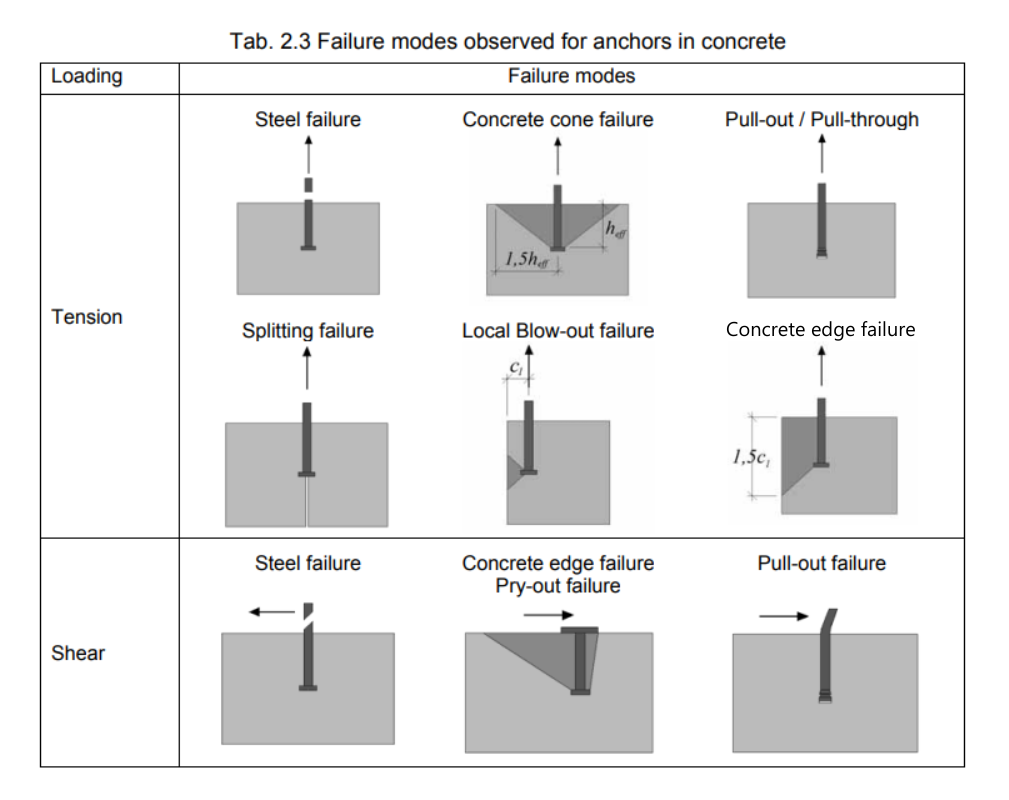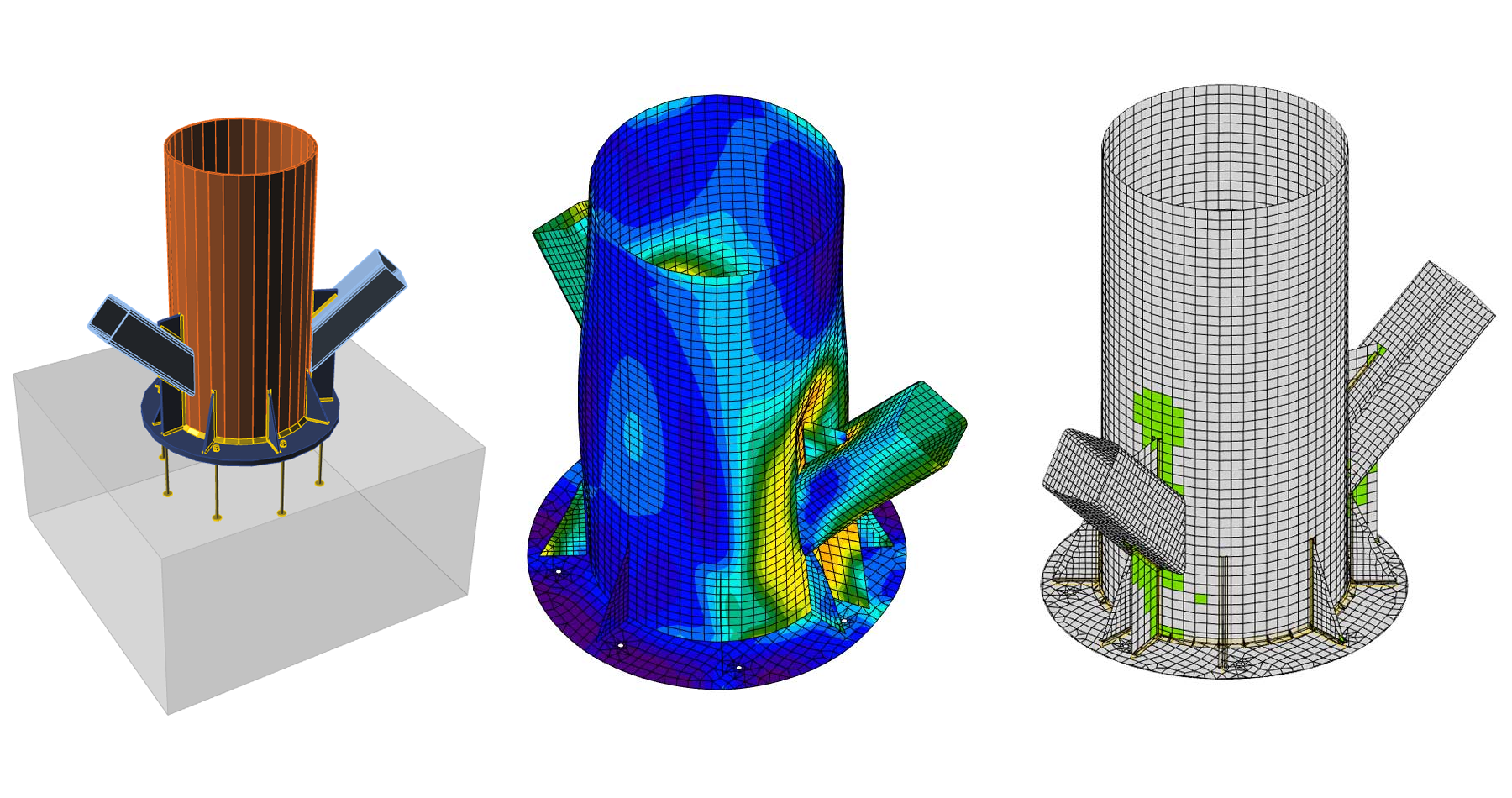You no longer have to struggle with anchoring design
According to research published in New Civil Engineer magazine, which surveyed over 100 practicing civil engineers, 55% reported spending up to 4 hours designing a typical steel-to-concrete connection and generating the associated report. That's quite a lot, considering everything that needs to be addressed in the project.
If you're one of those who struggles with details, then pay attention. IDEA StatiCa is the bringer of good news. This fight is now over as we are introducing the combined power of IDEA StatiCa Detail and IDEA StatiCa Connection, the ultimate tool for anchoring design. This makes anchoring design easy and takes a fraction of the time it used to.
Why is anchoring design such a pain for most of us?
Before we look further at our options, let's define how things have been done until now. And think about it for a moment.
Whether we focus on the Eurocode, AISC, or any other standard or specification for anchoring design, they all agree on a few key principles of how to deal with steel-concrete connections.
- Firstly, they specify several modes of failure for anchors and concrete footings, which are further categorized by the type of loading. Each condition is evaluated separately.
Figure 1: Scheme of failure modes – picture from Design of Steel-to-Concrete Joints Design Manual II
- Then, they propose a solution using the component method, where the joint must be divided into individual configurations and components and assessed one by one.
Figure 2: Component models – picture from Design of Steel-to-Concrete Joints Design Manual II
- To make things even more complicated, some standards either completely lack a proper procedure for assessing concrete or recommend an overly conservative design, suggesting stirrups and additional reinforcement without relying on a precise calculation for the specific joint. Instead, it is often replaced by a set of detailing rules.
There is nothing wrong with the above-mentioned approach. It has been proven over years of practice, but there are a few "buts":
- Designing even simpler types of anchoring can take a relatively long time.
- A conservative approach can become quite challenging (if possible) when it comes to less typical or entirely non-standard anchoring.
- The same applies to specialties, such as anchoring near the edge or shear transfer using shear lugs, etc.
Figure 3: Case Study – Anchorage design of steel spherical storage tanks, Canada
This leads to excessive material waste, significant time loss, or even case avoidance. But why if it isn't absolutely necessary? We’ve had FE methods here for a few years now, and their development continues to advance. At IDEA StatiCa, we use CBFEM and CSFM methods, which some might call innovative, but in reality, they have been around for some time and are based on assumptions or methods that have been effective for decades.
By utilizing them in today’s fast-paced environment, where the designing process is under pressure, we can gain an incredible advantage. We can save time and simultaneously achieve more accurate results. This not only brings peace of mind but also allows us to significantly optimize materials, leading to cost savings. So what do the latest tools offer us?
IDEA StatiCa as a complete solution for a complex problem
IDEA StatiCa is moving forward as applications continue to evolve and is beginning to cover almost all cases of details. There is no longer a need for one tool for steel joints, adding manual calculations, or another tool for concrete. We can now handle everything and efficiently connect the workflow. How?
Before version 24.1, in IDEA StatiCa Connection, we could evaluate steel parts with a few limitations and basic assessments of concrete footing (only plain concrete). Additional manual calculations were necessary, as well as complete calculations when using reinforced concrete. Unsatisfactory assessments are mainly due to the concrete block, causing headaches for more than one engineer.
This is changing with the release of the full version of IDEA StatiCa 3D Detail, specifically updated with full features and functionalities, such as shear transfer through anchors or shear lugs, designed for anchoring cases. Suitable for anyone facing issues such as pull-out or concrete cone failures and has been frustrated by the inability to incorporate reinforcement in Connection, you can now easily model the reinforcement and perform an analysis in 3D Detail. The use of reinforcement covers these failure modes that would otherwise occur in plain concrete. From 3D Detail, we can receive results for an Ultimate Limit State check for concrete, reinforcement, and anchors in tension.
Figure 4: Covered failure modes in IDEA StatiCa Connection and 3D Detail
Then in Connection, you can continue to evaluate anchors, shear lugs, base plate, etc., well, simply all the steel components as before. Even though both applications work independently, the real advantage comes to those who combine the power of Connection and Detail. The applications complement each other, and only together do they provide a comprehensive package of assessments.
A whole new range of possibilities
But enough talking. Let’s take a look at some practical examples suitable for our solution and discover what is now available:
Figure 5: (1) Steal beam to concrete beam (2) Steel column to concrete column (3) Heavy anchoring with shear lugs (4) Anchoring into reinforced walls
Getting the best of both worlds
Great tools would be useless without a simple workflow. No one wants to spend time modeling the same detail twice. So, linking Detail and Connection was an absolute necessity for us. With just one click, the model import, including the loads, is ready. The only extra step that needs to be done is adding reinforcement, and the model is prepared for the final calculation. The entire process can be completed in just a few minutes, see for yourself:
More about the import itself can be found in the release note article: Import of anchoring from Connection to Detail.
Conclusion
What to say in this conclusion? If designing connections is a struggle for you and takes an unreasonable amount of time, now could be the right time to do something about it. Download the new version, try it out, and let us know if we're heading in the right direction. Something tells us — maybe those thousands of satisfied customers — that we already are.
Interested in solving anchoring design?
Note.: For a proper understanding, I recommend reading the Known Limitations for 3D Detail, as well as delving into the Theoretical Background or a more practical description of the functionalities for deeper insight.








